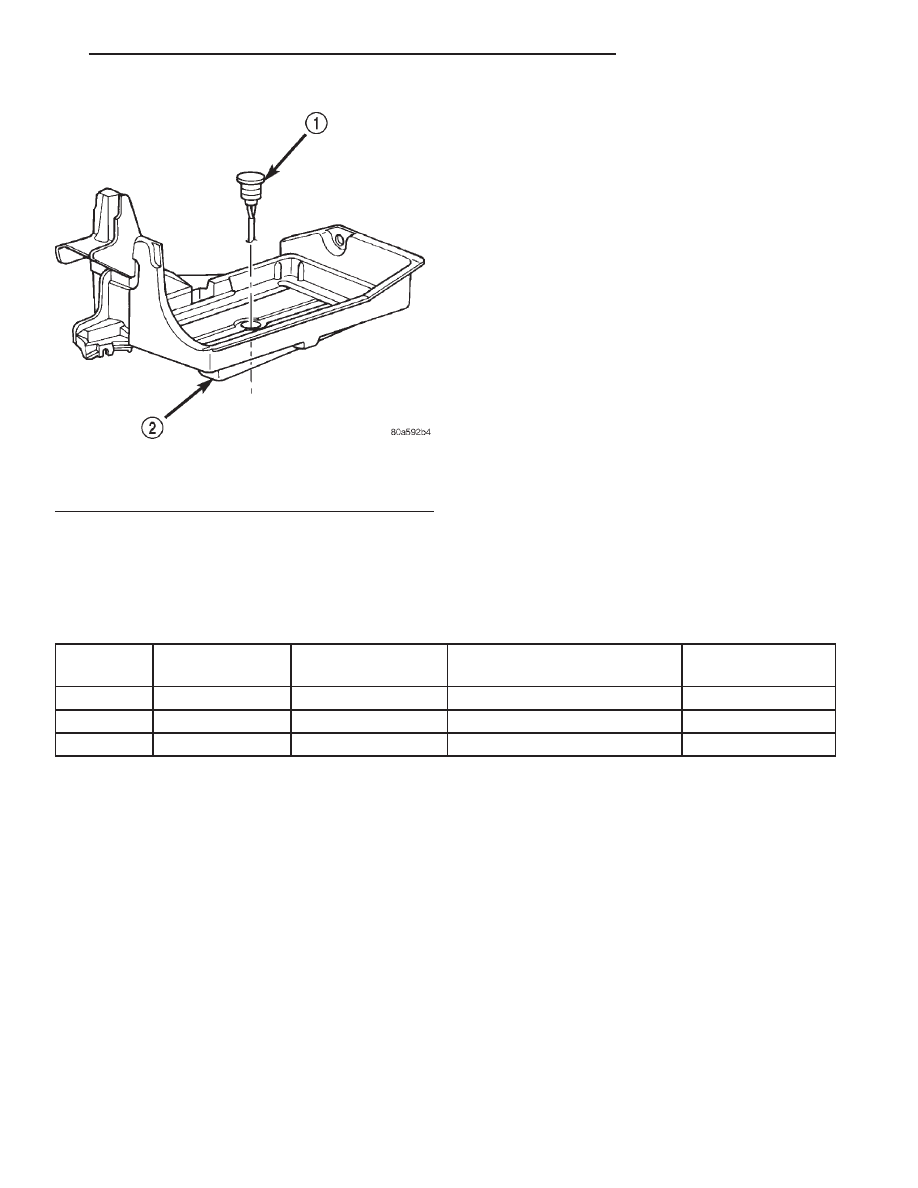Dodge Durango (DN). Manual - part 271

(2) Disconnect sensor pigtail harness from engine
wire harness. Sensor pigtail harness is clipped to
vehicle near its electrical connector.
(3) Pry sensor straight up from battery tray
mounting hole.
INSTALLATION
(1) Feed pigtail harness through hole in top of bat-
tery tray and press sensor into top of battery tray.
(2) Connect pigtail harness.
(3) Install battery. Refer to Group 8A, Battery for
procedures.
SPECIFICATIONS
GENERATOR RATINGS
TYPE
PART NUMBER
RATED SAE AMPS
ENGINES
MINIMUM TEST
AMPS
DENSO
56041324AC
136
4.7L
100
DENSO
56027912AB
117
3.9L/5.2L/5.9L
90
DENSO
56027913AB
136
3.9L/5.2L/5.9L
100
TORQUE CHART
DESCRIPTION
TORQUE
Generator Mounting Bolt—
3.9L/5.2L/5.9L Engines . . . . . 41 N·m (30 ft. lbs.)
Generator Pivot Bolt—
3.9L/5.2L/5.9L Engines . . . . . 41 N·m (30 ft. lbs.)
Generator Vertical Mounting Bolt—
4.7L V–8 Engine . . . . . . . . . . 55 N·m (40 ft. lbs.)
Generator (long) Horizontal Mounting Bolt—
4.7L V–8 Engine . . . . . . . . . . 55 N·m (40 ft. lbs.)
Generator (short) Horizontal Mounting Bolt—
4.7L V–8 Engine . . . . . . . . . . 74 N·m (55 ft. lbs.)
Generator B+ Output Cable
Terminal Nut . . . . . . . . . . . . 8.5 N·m (75 in. lbs.)
Fig. 5 Battery Temperature Sensor Location
1 – BATTERY TEMPERATURE SENSOR
2 – BATTERY TRAY
DN
CHARGING SYSTEM
8C - 5
REMOVAL AND INSTALLATION (Continued)